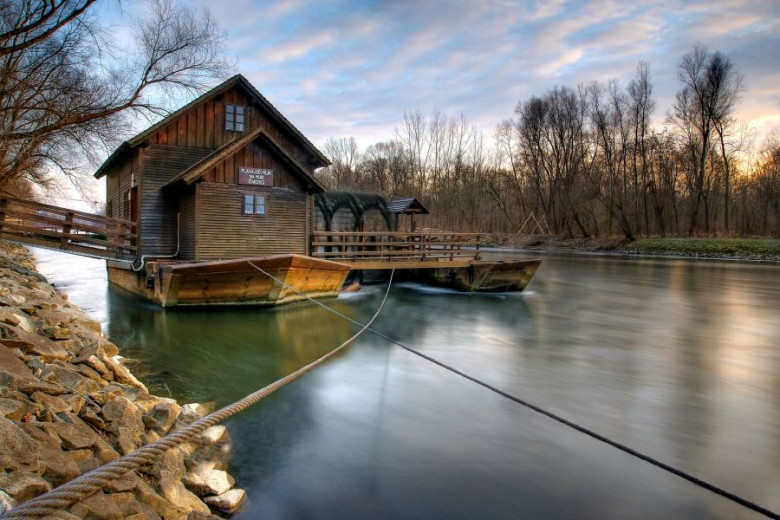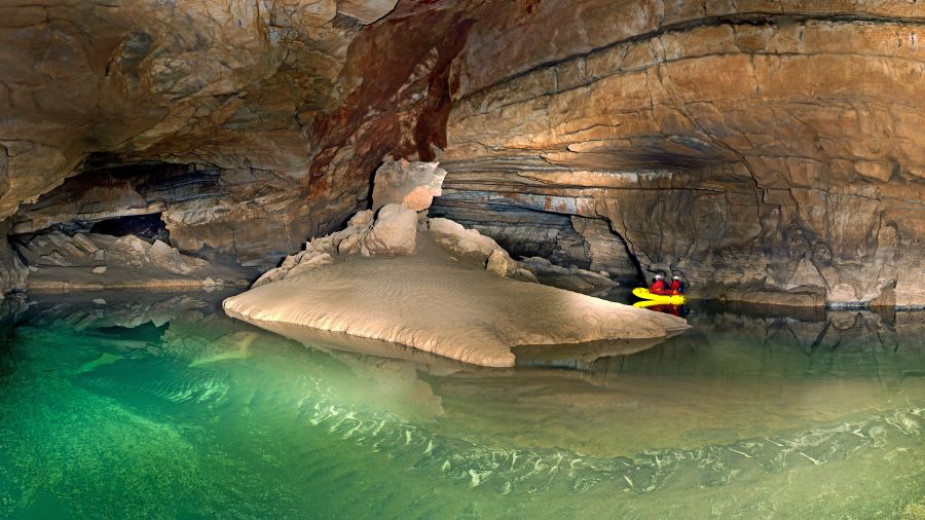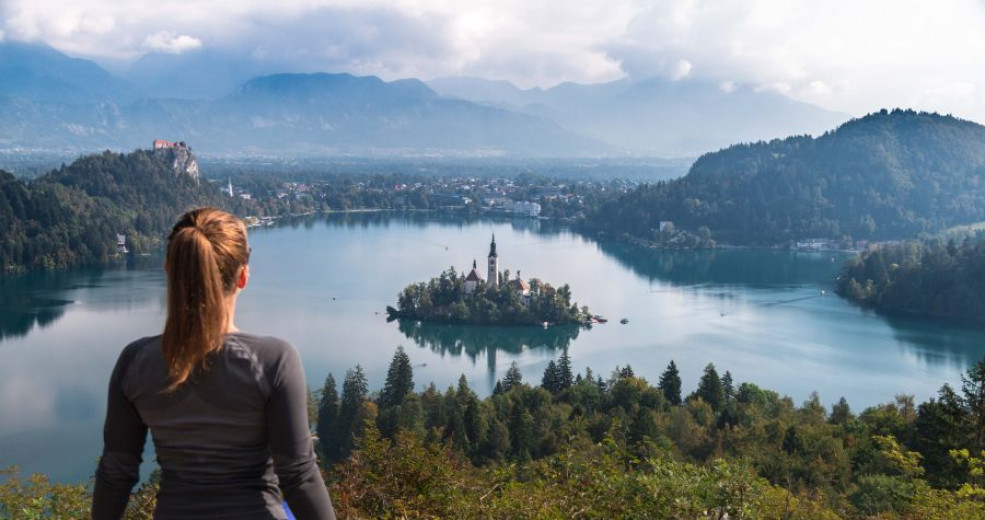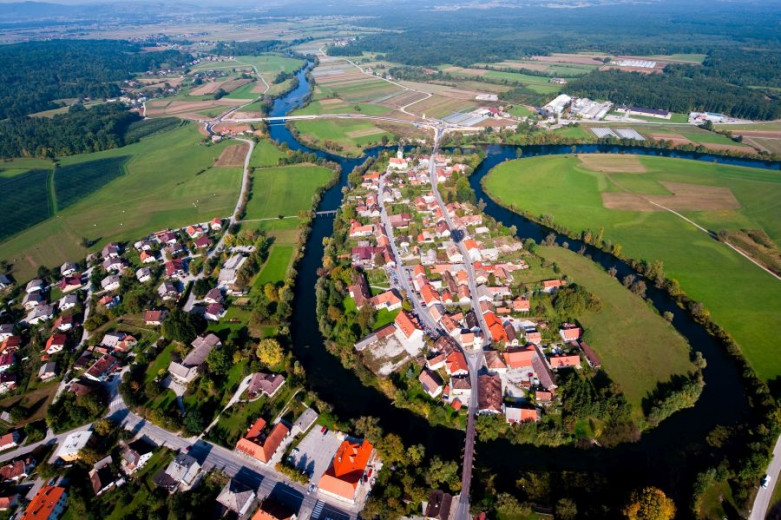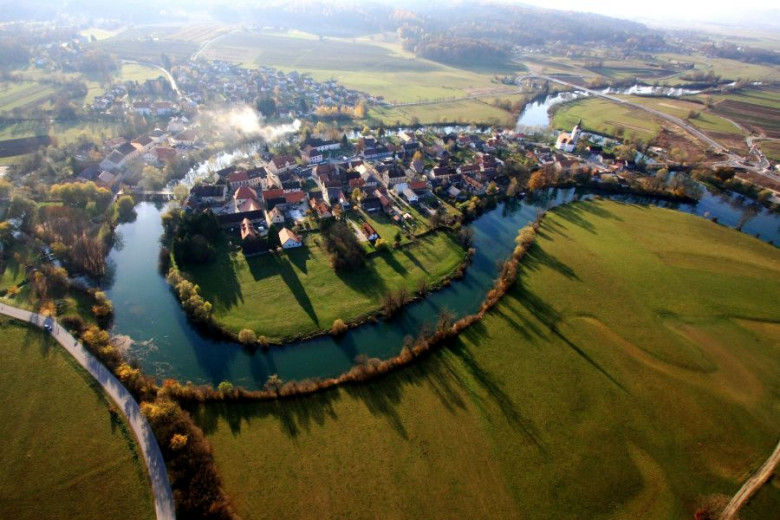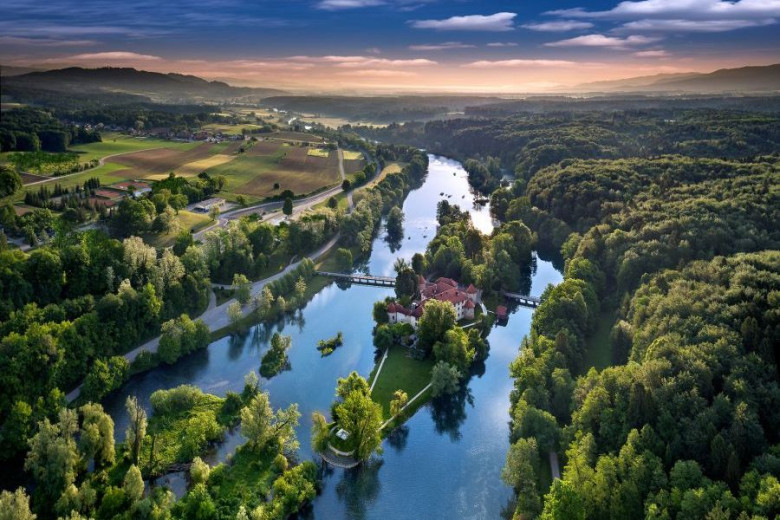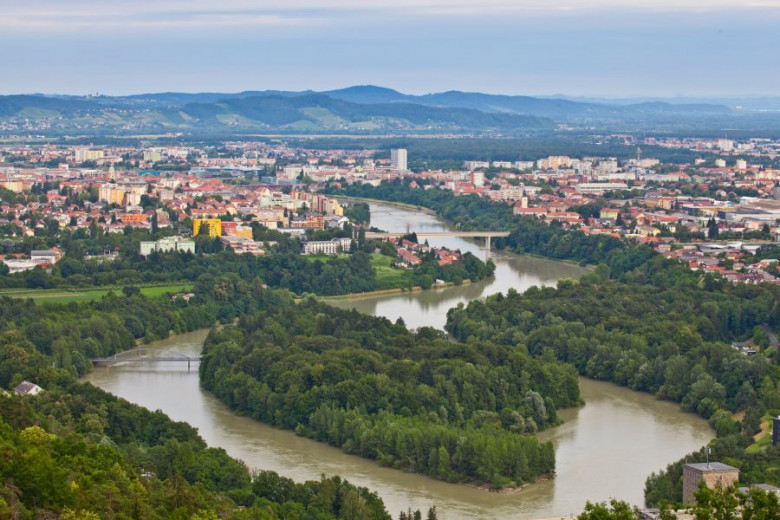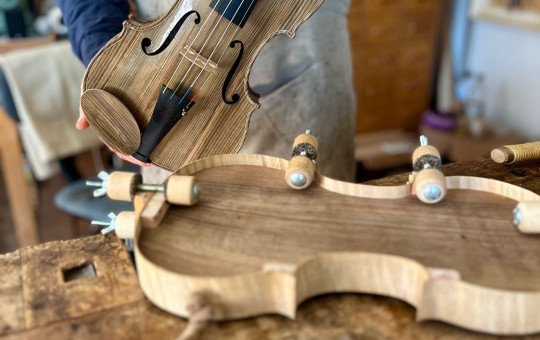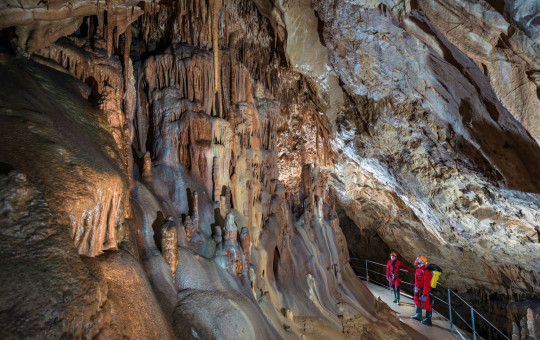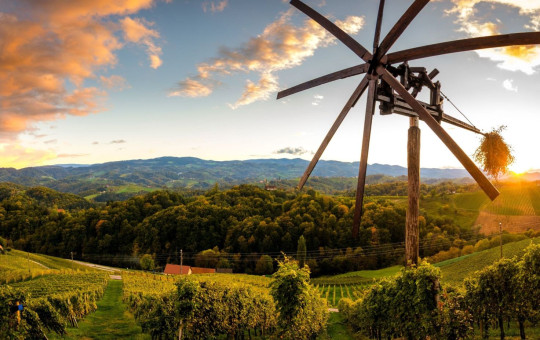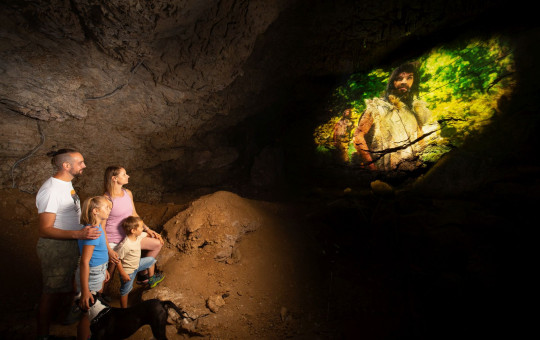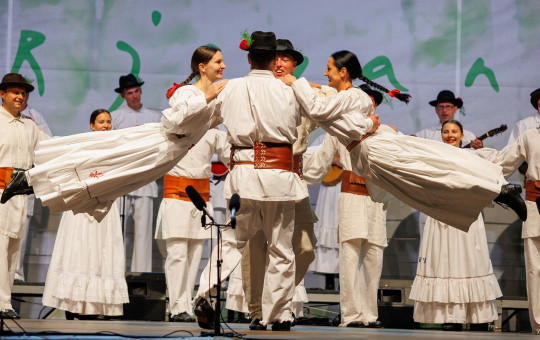Date: 26. March 2020
Time to read: 4 min
Slovenia has no coastal islands, but it does have several interesting ones elsewhere. It has an island in a lake, islands in rivers, an island with a castle, and an underground island in the depths of a cave. On one island there is even a town – the smallest and only one of its kind in Slovenia.
The Island of Love
In the village of Ižakovci, the river Mura has created a natural island, named by the locals as the Island of Love. Perhaps this was because of the romantic surroundings, which have always attracted lovers, or because the island was the spot where the countess Maria Zichy from Beltinci Castle used to secretly meet with her lover. At that time, the countess had her own bathing area on the island, which was also a venue for dances and other gatherings. Today, the island caters for many different activities that attract day trippers, tourists and random visitors.
One of the most interesting events is The Days Of Büjraši ("büjranje" - consolidation, damming up of the riverbed or riverbank of the Mura), a festival dedicated to the lives and work of the büjraši, the people who used to live alongside the Mura.
On the Island of Love, there is also a floating mill – the only one of its kind in Slovenia, which was reconstructed in 1999 from the original plans of one of the former mills on the river Mura.
The wooden mill is built entirely on water, together with a huge mill wheel and a miller’s room, where buckwheat, wheat, spelt and maize flour is ground. Visitors can also take a ferry in Ižakovci, which is one of the four remaining ferries on the river Mura. The ferry is made up of two shallow boats linked with a platform. The platform with its enclosure is attached to a steel riverside rope that carries the pulley with the hanging rope. The ferry moves on the river with the help of the river’s current.
The island is known for its beauty and unspoilt nature, and the river Mura, the symbol and soul of the Prekmurje region, makes it even more attractive.
The underground island
Over 8 km long Križna Cave in the Notranjska region is one of the world's famous and most beautiful water karst caves. Its special feature is 22 underground lakes separated by calcareous sinter barriers (formed as a result of the sedimentation of calcium carbonate in the water) where crystal clear water flows. The emerald green lakes, silence and fabulous stalactites and stalagmites provide an unforgettable experience for visitors.
But Križna Cave also has another characteristic – an underground island in the middle of the 13th lake. It lies approximately 100 metres underground and is the largest underground island in Slovenia.
It was formed as a result of the collapse of large rocks and is mostly made of mud and rocky debris, shaped in a form slightly reminiscent of a star.
Križna Cave is also one of the largest sites of cave bear bones in this part of Europe and one of the most biodiverse karst caves in the world when it comes to the variety of animal life.
The small island in a lake
In the middle of Lake Bled, formed by glaciers tens of thousands of years ago, lies the island of Bled, which has been shaped over centuries by human hand.
The island, which covers 0.82 hectares, is located in the western part of the lake and rises 18 metres above the lake level. It looks like a small floating town in the middle of the lake.
The magical view of the island invites visitors to take a trip across the lake to the island in the traditional Pletna boat, climb up the 99 stone stairs and ring the 'bell of wishes'. The island is covered in green vegetation and has several buildings, the main one being the Pilgrimage Church of the Assumption of Mary, a medieval church rebuilt in Baroque style, with its majestic tower.
The island of Bled is also an important archaeological site, as in the place where the church now stands, archaeologists have found traces of prehistoric and Slavic settlement.
Today, the island is a popular tourist attraction with daily trips to the island by Pletna boats.
The town on an island
Kostanjevica na Krki, the only Slovenian town situated on an island, is the smallest and one of the oldest Slovenian towns and the oldest one in the Dolenjska region.
The town was formed on the artificial island set in the meander of the river Krka, in the vicinity of Landestrost Castle, a former Spanheim border fortress.
Kostanjevica na Krki was first mentioned in 1220 as the seat of the parish and gained town rights in 1252. The old town structure with two parallel streets that meet in the northwest and southeast has remained the same until the present day. There are two larger wood bridges intended for traffic leading to the small island that is 500 meters long and 200 meters wide, and the third bridge, which is for pedestrians only. At the north side of the island, there is the St. Jacob’s church, which was built in the 13th century as part of the fortification system by the northern bridge. Another valuable religious monument – the Church of St. Nicholas – stands at the southern end of the island, while the town also has several other elements of religious heritage.
Kostanjevica na Krki, rich in natural and cultural attractions, was proclaimed a first class cultural monument and is thus under complete cultural protection.
Its rich history, architecture, beauty and lively atmosphere, contributed to by local inhabitants, attract large numbers of visitors from far and wide.
The castle island
Otočec Castle, built on one of the islands in the river Krka, is the only castle surrounded by water in Slovenia.
The castle dates from the mid-13th century and its image has changed over the centuries. The building was extended in the mid-14th century and acquired an L-shaped floor plan. The archival sources also bear witness to a castle rampart, while the security of the castle was further increased by the excavation of a new southern channel for the river Krka, which cut off the natural river meander. This transformed the former riverside post into an island, which was joined to the mainland by a wooden bridge.
Today, the castle has been converted into Otočec Castle Hotel, one of the most attractive locations in Slovenia for weddings and other ceremonial events.
One of the island's distinctive features is also the castle park, designed in the English landscape style. The oldest trees in the park are a good century old, but the majority were planted after the renovation of the castle the 1950's. The park also contains examples of exotic tree species, such as swamp cypress, tulip tree, cigar tree, thorny locust and others. During spring months, if you take a walk along the castle park, you will see large flocks of beautiful white swans on the green river Krka.
The Maribor Island
The Maribor Island is a natural river island in the river Drava ahead of Maribor.
The island was created by alluvial deposits at the end of the last ice age. The interesting fact is that the island's former size was around a quarter larger. In 1946, during the construction of the nearby hydroelectric power plant, part of the island was reclaimed by the rising water. A concrete pier with bank protection was subsequently built at the western side in the direction of the power plant to prevent further erosion from flood waters.
In 1951, the Maribor Island was protected as a natural attraction, and today it is also protected as a geomorphological and botanical natural monument.
The eastern part of the island is covered by bushes and oak and pine trees, while beech and common hornbeam prevail in the western part of the island. The island provides an important habitat for animal species, birds in particular. Forest bird species are the most typical of the area, while in winter the island provides refuge for wetland birds. Since 1927, the island has had a swimming pool, much to the joy of the locals and foreign visitors during summer months.

